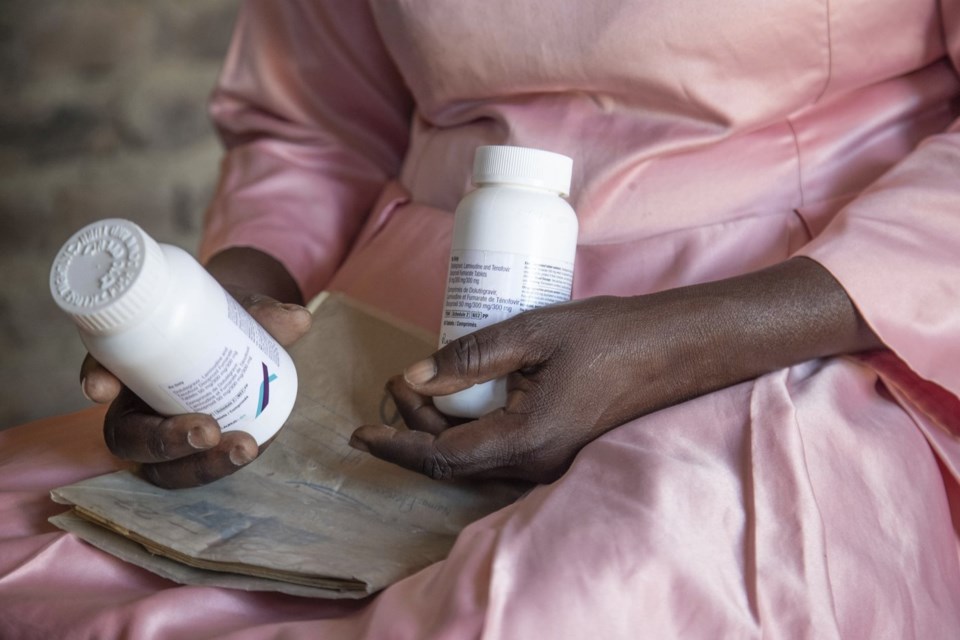The program known as PEPFAR is one of the most effective and popular U.S. foreign aid projects in history, and the government says it has saved the lives of over 25 million people around the world with HIV.
But despite years of bipartisan support, PEPFAR has faced a severe threat as the Trump administration dismantles most U.S. foreign aid.
PEPFAR on Tuesday appeared to be spared a $400 million cut as Republicans acted in rare defiance of a request by President Donald Trump. But governments, health experts and people with HIV around the world are alarmed by the effects of other U.S. aid cuts and chaos that are already disrupting the crucial supply of HIV drugs — which are meant to be taken daily.
Here's a look at PEPFAR and how it affects millions of people globally.
Fears of an AIDS resurgence
Today, many babies are born infection-free to mothers with HIV — the U.S. State Department says PEPFAR has been responsible for 5.5 million such births — and most people around the world no longer see an infection as a death sentence.
Governments in Africa and elsewhere had even begun to worry about complacency as people, especially youths, took the widespread availability of HIV drugs for granted. In another significant step forward, the U.S. Food and Drug Administration recently approved for use the world’s only twice-a-year shot to prevent HIV.
But the abrupt U.S. aid cuts have health officials in developing countries warning of a return to the early days of the AIDS pandemic, when drugs were nonexistent or severely limited and clinics were filled with the dying. PEPFAR was launched in 2004 in response to those grim scenes.
Also known as the U.S. President’s Emergency Plan for AIDS Relief, the program has partnered with nonprofit groups to provide HIV medication — including the preventative PrEP — to millions around the world. It has strengthened national health care systems, cared for children orphaned by AIDS and provided job training for people at risk. It has played an important role in testing for and tracking HIV infections.
HIV/AIDS has no cure, and it has killed over 40 million people globally over the years. Now the U.N. agency on AIDS is warning that analysis suggests 4 million additional AIDS-related deaths between now and 2029, including 300,000 additional children’s deaths, if programs permanently lose PEPFAR's support.
From widespread support to baseless claims
Since PEPFAR's creation by Congress and Republican President George W. Bush, the program has largely enjoyed support across the political spectrum — and gratitude from countries whose health systems have been poorly equipped to care for millions with HIV.
But misinformation has crept in. The Heritage Foundation, an influential conservative Washington think tank, accused the Biden administration of using PEPFAR “to promote its domestic radical social agenda overseas.” Conservatives claimed there were efforts to integrate abortion with HIV/AIDS prevention, a claim the Biden administration denied. Similar claims linger under the Trump administration.
Trump and his officials also claim widespread waste and fraud as they seek to dismantle U.S. foreign aid. But PEPFAR has been repeatedly scrutinized. Last year, the government said the State Department's Office of Inspector General had conducted 80 audits, inspections, and special reviews that included oversight of PEPFAR programs, “including 21 thematic reviews and audits specifically focused on PEPFAR.”
Impossible to replace US funding
The $400 million proposed cut to PEPFAR still could be restored, in part or in full, as the bill on spending cuts faces a final vote in the Senate, a vote in the House of Representatives and Trump's signature before a Friday deadline.
“We must stay vigilant,” International AIDS Society President Beatriz Grinsztejn said in a statement Wednesday after PEPFAR appeared to be spared.
No matter what, countries and health experts say it will be impossible to fill the funding gap left by the overall U.S. withdrawal of billions of dollars in aid for the global HIV response, including via PEPFAR.
Last month, a UNAIDS report said the abrupt cuts have “destabilized supply chains, led to the closure of health facilities, left thousands of health clinics without staff, set back prevention programs, disrupted HIV testing efforts and forced many community organizations to reduce or halt their HIV activities.”
South Africa, where more people live with HIV than anywhere else in the world, has said 12 specialized HIV clinics that were funded by the U.S. have had to close down and over 8,000 health workers in its national HIV program are out of work.
Now health workers there and elsewhere are trying to track down an unknown number of people who have lost access to HIV medication. The stakes are deadly. Stopping the drugs allows the virus to start multiplying again. HIV can rebound to detectable levels in people’s blood in just a few weeks, putting sexual partners at risk. The virus could even become drug-resistant.
“It has really been hectic for us,” said Mbonisiwe Hlongwane, manager of the HIV program at the Bertha Gxowa public hospital in Germiston, east of Johannesburg. And the uncertainty only continues.
___
Associated Press writer Mogomotsi Magome in Johannesburg contributed reporting.
Cara Anna, The Associated Press




